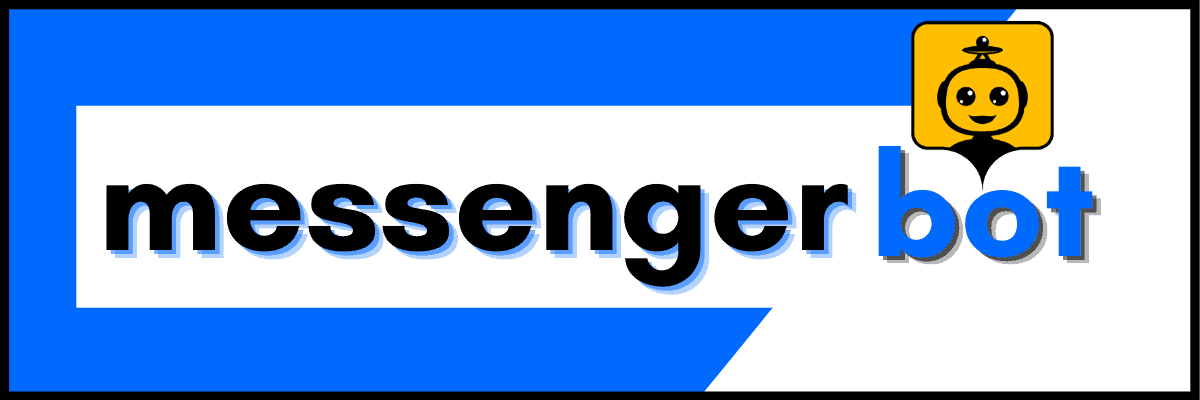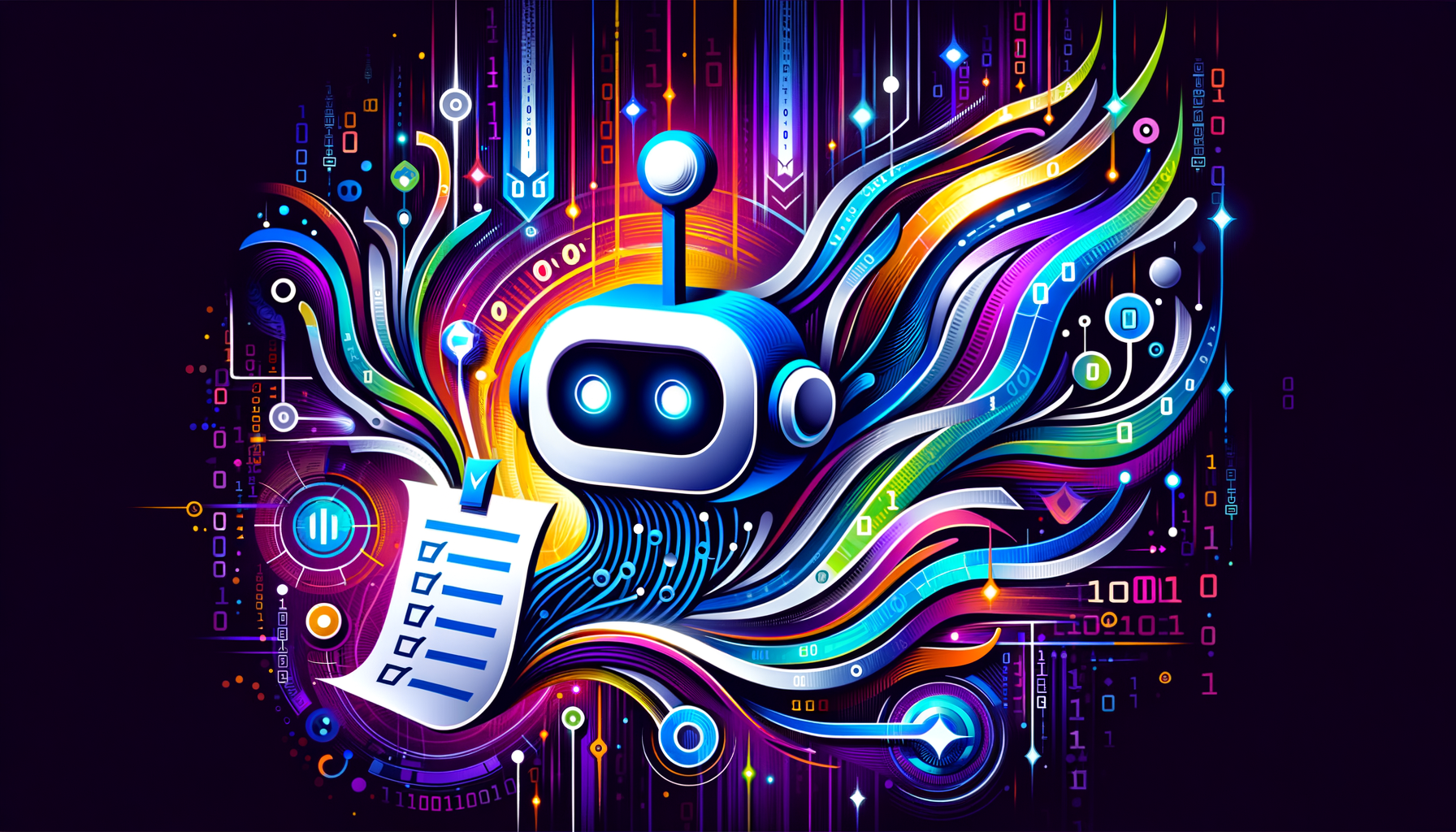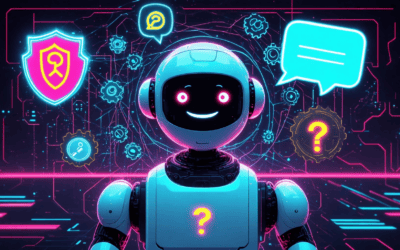In the era of digital transformation, chatbot surveys are revolutionizing the landscape of data collection and research methodologies. These AI-powered tools are not just streamlining the survey process; they’re redefining how we engage with respondents and gather insights. From free chatbot survey options to sophisticated platforms designed for in-depth research, the spectrum of available solutions is vast. As businesses and researchers grapple with challenges like error code 522 and strive for more engaging, conversational data collection methods, chatbot surveys emerge as a game-changing solution. This article delves into the world of chatbot surveys, exploring their benefits, best practices, and the future of AI-driven research, offering a comprehensive guide for those looking to harness the power of this innovative technology.
Understanding Chatbot Surveys
In the rapidly evolving landscape of digital research, chatbot surveys have emerged as a powerful tool for data collection. These AI-driven questionnaires are revolutionizing the way we gather insights, offering a dynamic and interactive approach to traditional survey methods. By leveraging Natural Language Processing (NLP) and machine learning algorithms, chatbot surveys provide a conversational interface that engages respondents more effectively than static forms.
As a leader in automation solutions, we at Messenger Bot recognize the transformative potential of chatbot surveys in enhancing user engagement and data quality. Our platform integrates seamlessly with various channels, including social media and websites, to deliver a superior survey experience.
What is a chatbot survey?
A chatbot survey is an automated, conversational method of collecting data from respondents using artificial intelligence. Unlike traditional surveys, chatbot surveys simulate a human-like interaction, asking questions and adapting based on the user’s responses. This approach can significantly reduce survey fatigue and increase completion rates.
Key features of chatbot surveys include:
- Real-time response adaptation
- Personalized question flow
- Multi-platform compatibility
- Enhanced data accuracy through immediate validation
By utilizing our advanced features, researchers can create sophisticated chatbot surveys that capture nuanced insights while maintaining a friendly, conversational tone.
Benefits of AI-powered data collection
AI-powered data collection through chatbot surveys offers numerous advantages over traditional methods. These benefits extend beyond mere convenience, impacting the quality and depth of insights gathered.
Some key benefits include:
- Increased response rates due to engaging, conversational interfaces
- Reduced survey fatigue, leading to more thoughtful responses
- Real-time data analysis and reporting capabilities
- Cost-effective scaling of research projects
- Minimized human error in data collection and entry
Our flexible pricing options make it possible for businesses of all sizes to harness these benefits, democratizing access to advanced research tools. Moreover, the integration of AI in data collection aligns with current trends in digital transformation, positioning organizations at the forefront of research methodologies.
While chatbot surveys offer significant advantages, it’s crucial to address potential challenges such as error code 522 and other technical issues to ensure smooth data collection. By leveraging our robust platform and comprehensive tutorials, researchers can overcome these hurdles and focus on extracting valuable insights from their surveys.

Choosing the Right Chatbot for Research
When it comes to conducting research through chatbot surveys, selecting the right tool is crucial for gathering accurate and meaningful data. As AI technology continues to advance, chatbots have become increasingly sophisticated, offering researchers powerful capabilities for data collection and analysis.
At Messenger Bot, we understand the importance of choosing the best chatbot for your research needs. Our AI-powered platform is designed to streamline the survey process, providing researchers with intuitive tools to create engaging and effective chatbot surveys.
What is the best chatbot for research?
The best chatbot for research depends on your specific requirements, but there are several key features to look for. An ideal research chatbot should offer:
- Customizable survey flows
- Natural language processing capabilities
- Multi-platform integration
- Robust data analysis tools
- Scalability to handle large volumes of responses
Our Messenger Bot features encompass these essential elements, making it a top choice for researchers across various fields. By leveraging advanced AI and NLP technologies, we ensure that your chatbot surveys deliver high-quality data while maintaining engaging user interactions.
Comparing AI chatbot survey platforms
When evaluating different AI chatbot survey platforms, it’s important to consider factors such as ease of use, integration capabilities, and data security. Here’s a comparison of some leading platforms:
- Messenger Bot: Offers a user-friendly interface, seamless integration with popular messaging platforms, and advanced AI-driven response analysis.
- SurveyMonkey: Known for its traditional survey tools, it has recently incorporated chatbot functionality, though it may lack some advanced AI features.
- Typeform: Provides visually appealing surveys with conversational elements, but may have limitations in complex branching logic.
- Tars: Specializes in chatbot-based lead generation, which can be adapted for research purposes.
While these platforms offer various features, our Messenger Bot free trial allows researchers to experience firsthand how our AI-powered chatbot can enhance their survey methodologies and data collection processes.
As you compare different options, consider how each platform aligns with your research objectives and technical requirements. Look for solutions that offer robust AI-driven chatbot optimization to ensure your surveys remain effective and engaging over time.
By choosing the right chatbot for your research, you can significantly improve the quality and efficiency of your data collection efforts. With Messenger Bot, researchers gain access to cutting-edge AI technology that can transform their approach to chatbot surveys and elevate the overall research experience.
III. Cost Considerations and Accessibility
When it comes to implementing chatbot surveys, cost and accessibility are crucial factors to consider. As businesses seek to leverage AI-powered data collection methods, understanding the financial implications and available options is essential for making informed decisions.
A. Is chatbot free?
The answer to whether chatbots are free isn’t straightforward. While some platforms offer free chatbot survey options, most comprehensive solutions come with associated costs. Many providers, including Messenger Bot, offer tiered pricing models that cater to different business needs and scales.
Free chatbot survey tools often come with limitations in terms of features, customization options, and the number of interactions allowed. These free versions can be suitable for small-scale projects or for businesses just starting to explore the potential of chatbot surveys. However, as your research needs grow and you require more advanced functionalities, investing in a paid solution becomes necessary.
It’s important to note that while there may be upfront costs associated with implementing a chatbot survey system, the long-term benefits in terms of efficiency, data quality, and scalability often outweigh the initial investment. By automating data collection processes, businesses can significantly reduce the time and resources typically required for traditional survey methods.
B. Free chatbot survey options and limitations
For those looking to explore free chatbot survey options, several platforms offer basic functionalities at no cost. These free versions can be an excellent starting point for understanding the potential of chatbot surveys in your research methodology. However, it’s crucial to be aware of their limitations:
1. Limited interactions: Free plans often cap the number of survey responses or chatbot interactions per month.
2. Restricted features: Advanced analytics, NLP capabilities, and integrations with other tools may be unavailable in free versions.
3. Branding constraints: Free chatbots might display the provider’s branding, which can impact the professional appearance of your survey.
4. Limited customization: The ability to tailor the chatbot’s personality or design to match your brand may be restricted.
5. Lack of support: Free users typically have limited access to customer support, which can be challenging when troubleshooting issues like error code 522.
While these limitations exist, free chatbot surveys can still provide valuable insights and serve as a stepping stone towards more robust AI-powered data collection methods. As your research needs evolve, transitioning to a paid solution like Brain Pod AI or upgrading your Messenger Bot plan can unlock the full potential of chatbot surveys, enhancing your ability to gather high-quality data and drive meaningful insights for your business.
IV. Designing Effective Chatbot Surveys
When it comes to creating impactful chatbot surveys, design plays a crucial role in ensuring high engagement and valuable data collection. As we delve into the art of crafting these AI-powered questionnaires, it’s essential to understand the types of questions chatbots typically ask and how to structure them for optimal results.
A. What questions does a chatbot ask?
Chatbots are versatile tools capable of asking a wide range of questions, tailored to the specific research objectives. Some common types of questions include:
- Multiple-choice questions for quantitative data
- Open-ended questions for qualitative insights
- Rating scales to measure satisfaction or agreement
- Yes/No questions for quick binary responses
- Likert scale questions to gauge attitudes and opinions
The key to effective chatbot surveys lies in leveraging Natural Language Processing (NLP) to make interactions feel more conversational and human-like. This approach can significantly boost engagement and response rates compared to traditional survey methods.
B. Crafting engaging chatbot survey questions
To create compelling chatbot survey questions that drive meaningful insights, consider the following strategies:
- Keep it concise: Craft clear, concise questions that are easy to understand and quick to answer. This approach helps maintain user engagement throughout the survey.
- Personalize the experience: Use the respondent’s name and tailor questions based on previous answers to create a more personalized interaction.
- Incorporate multimedia: Enhance engagement by including images, videos, or audio elements when appropriate.
- Use conditional logic: Implement skip logic to present relevant follow-up questions based on previous responses, creating a more dynamic and efficient survey experience.
- Balance question types: Mix different question formats to maintain interest and gather diverse data points.
By implementing these strategies, you can design chatbot surveys that not only collect valuable data but also provide an engaging experience for participants. This approach can lead to higher completion rates and more accurate insights for your research.
When designing your chatbot survey, it’s crucial to consider the user experience across various platforms. For instance, Brain Pod AI’s Multilingual AI Chat Assistant offers seamless integration across multiple channels, ensuring a consistent and engaging survey experience regardless of the platform used.
Remember, the goal is to create a survey that feels like a natural conversation rather than a robotic questionnaire. By focusing on user engagement and leveraging advanced AI technologies, you can craft chatbot surveys that yield high-quality data while providing a positive experience for respondents.

V. Implementing Chatbot Surveys in Research
Implementing chatbot surveys in research has revolutionized data collection methodologies, offering a blend of efficiency and engagement that traditional survey methods often lack. As we dive into the world of AI-powered research tools, it’s crucial to understand the features and functionalities that make chatbot survey apps stand out, as well as how to effectively integrate these AI chatbots into robust research methodologies.
A. Chatbot survey app features and functionality
Chatbot survey apps have evolved to offer a wide array of features designed to enhance the research process. One of the standout capabilities is their ability to provide real-time data collection and analysis, allowing researchers to gain insights as responses come in. This immediacy can be particularly valuable for time-sensitive studies or when quick decision-making is required.
Another key feature is the adaptive questioning capability. Unlike static surveys, chatbot surveys can adjust questions based on previous responses, creating a more personalized and relevant experience for participants. This dynamic interaction not only improves the quality of data collected but also helps maintain participant engagement throughout the survey process.
Many chatbot survey platforms also offer multilingual support, breaking down language barriers and enabling researchers to conduct global studies with ease. This feature is particularly beneficial for businesses looking to expand their reach or researchers aiming to gather diverse perspectives across different cultures and regions.
Integration capabilities are another crucial aspect of chatbot survey apps. The ability to seamlessly connect with other research tools and data analysis platforms can significantly streamline the research workflow. For instance, Brain Pod AI offers robust integration options that allow researchers to connect their chatbot surveys with various data visualization and analysis tools, enhancing the overall research process.
B. Integrating AI chatbots into research methodologies
Integrating AI chatbots into research methodologies requires a strategic approach to leverage their full potential. One effective method is to use chatbots as an initial screening tool. They can quickly gather basic information and determine if a participant meets the study criteria, saving time and resources in the participant selection process.
Chatbots can also be employed for longitudinal studies, where they can be programmed to reach out to participants at specific intervals, ensuring consistent data collection over time. This automated follow-up system can significantly reduce the workload on researchers and minimize the risk of participants dropping out due to lack of engagement.
In qualitative research, AI chatbots can be used to conduct preliminary interviews or gather open-ended responses. Their natural language processing capabilities allow them to understand and respond to participant inputs, probing deeper when necessary to gather rich, qualitative data.
However, it’s important to note that while integrating AI chatbots can greatly enhance research methodologies, they should not completely replace human interaction. Researchers should use chatbots as a complementary tool, combining their efficiency with human expertise for optimal results.
When implementing chatbot surveys, it’s crucial to be aware of potential technical issues. For instance, error code 522 may occur due to connection timeout between the server and the chatbot. Understanding these technical aspects can help researchers troubleshoot effectively and ensure smooth data collection.
By thoughtfully integrating AI chatbots into research methodologies, researchers can enhance their data collection processes, improve participant engagement, and ultimately gather more comprehensive and accurate insights. As we continue to advance in NLP and AI technologies, the role of chatbot surveys in research is likely to become even more significant, opening up new possibilities for innovative research designs and methodologies.
VI. Advancements in Chatbot Survey Technology
As we navigate the evolving landscape of AI-powered data collection, chatbot survey technology continues to make significant strides. The integration of advanced Natural Language Processing (NLP) techniques has revolutionized the way we design and implement surveys, offering unprecedented levels of engagement and data quality.
At Messenger Bot, we’re at the forefront of these advancements, constantly refining our AI-driven platform to deliver cutting-edge solutions for businesses seeking to enhance their digital communication strategies.
A. Perplexity AI and its impact on survey design
Perplexity AI has emerged as a game-changer in the realm of chatbot surveys, offering a more nuanced approach to understanding and responding to user inputs. This technology allows for the creation of more dynamic and context-aware surveys, capable of adapting to the unique responses of each participant.
By leveraging Perplexity AI, we can now design surveys that:
1. Interpret complex user responses with greater accuracy
2. Generate follow-up questions based on previous answers
3. Provide more personalized and engaging survey experiences
These capabilities significantly enhance the quality of data collected, as participants are more likely to provide thoughtful and detailed responses when interacting with a more intelligent and responsive system.
B. Future trends in AI-powered data collection
Looking ahead, the future of AI-powered data collection is brimming with exciting possibilities. As we continue to refine our chatbot features, we anticipate several key trends that will shape the landscape of survey technology:
1. Enhanced multilingual support: AI-powered chatbots will become increasingly adept at conducting surveys across multiple languages, breaking down language barriers and enabling truly global research initiatives.
2. Emotion recognition: Advanced NLP algorithms will be able to detect and respond to emotional cues in text responses, allowing for more empathetic and nuanced interactions.
3. Integration with IoT devices: Chatbot surveys will extend beyond traditional digital platforms, integrating with IoT devices to collect real-time data in various contexts.
4. Predictive analytics: AI-powered surveys will not only collect data but also provide instant insights and predictions based on the responses received.
5. Augmented Reality (AR) integration: The incorporation of AR elements into chatbot surveys will create more immersive and interactive experiences for participants.
As these trends materialize, we at Messenger Bot are committed to staying ahead of the curve, continuously updating our AI-powered solutions to meet the evolving needs of researchers and businesses alike.
It’s worth noting that while platforms like SurveyMonkey and Typeform have traditionally dominated the survey landscape, the rapid advancements in AI-powered chatbots are reshaping the industry. Our focus on leveraging cutting-edge AI technology positions us uniquely to offer more dynamic and engaging survey experiences.
As we embrace these advancements, it’s crucial to address potential challenges, such as the occasional error code 522 that may arise during implementation. Our team is dedicated to providing robust support and continuously improving our systems to ensure seamless survey experiences for both researchers and participants.
By staying attuned to these emerging trends and continuously refining our AI algorithms, we’re not just keeping pace with the evolution of chatbot survey technology – we’re helping to shape its future.
VII. Overcoming Challenges in Chatbot Surveys
As chatbot surveys gain popularity in research and data collection, it’s crucial to address the challenges that may arise during implementation. By understanding and overcoming these obstacles, researchers can ensure the reliability and effectiveness of their AI-powered data collection methods.
A. Addressing error code 522 and other technical issues
One common technical challenge encountered in chatbot surveys is error code 522. This error typically indicates a connection timeout between the client and the server. To resolve this issue:
- Check your internet connection and ensure it’s stable.
- Clear your browser cache and cookies.
- Try accessing the chatbot survey from a different device or network.
- Contact the survey platform’s support team if the issue persists.
Other technical issues that may arise include:
- Compatibility problems with certain browsers or devices
- Slow loading times due to complex survey logic
- Integration issues with third-party tools or APIs
To mitigate these challenges, it’s essential to thoroughly test your chatbot survey across various platforms and devices before launching. Additionally, using a robust chatbot platform with reliable customer support can help address technical issues promptly.
B. Ensuring data quality and reliability in chatbot research papers
Maintaining data quality and reliability is crucial for the credibility of chatbot research papers. Here are some strategies to enhance the integrity of your chatbot survey data:
- Implement validation checks: Use built-in logic to identify inconsistent or illogical responses, flagging them for review or follow-up.
- Utilize Natural Language Processing (NLP): Employ advanced NLP techniques to accurately interpret and categorize open-ended responses, ensuring proper analysis of qualitative data.
- Monitor completion rates: Keep track of survey abandonment rates and identify points where participants tend to drop off. This can help in optimizing survey length and question flow.
- Incorporate attention checks: Include questions that verify the respondent’s attentiveness throughout the survey to filter out low-quality responses.
- Ensure proper sampling: Use appropriate sampling techniques to ensure your chatbot survey reaches a representative audience, avoiding bias in your research results.
By addressing these technical challenges and implementing strategies to maintain data quality, researchers can harness the full potential of chatbot surveys for their studies. Exploring advanced chatbot platforms can provide additional tools and features to overcome these hurdles effectively.
As the field of AI-powered data collection continues to evolve, staying informed about the latest advancements and best practices in chatbot survey technology is crucial. Platforms like Brain Pod AI offer cutting-edge solutions that can help researchers navigate these challenges and optimize their survey designs for maximum effectiveness and reliability.




